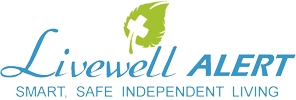Smartphone and wearable medical alert technology usage are growing among all age demographics, including seniors aged 65 and older.
With all this new technology, seniors face a wide array of options, from smartphone and smartwatch safety applications to self-contained wearable mobile medical alert emergency response systems, to help stay independent and continue living life the way they want with the ability to easily get help if needed.
But all of these technologies can also be overwhelming. What are the pros of smartphone or smartwatch apps versus mobile medical alert systems for seniors?
Smartphone applications enable users to open an app on their phone and tap an on-screen button to get help wherever they are. Smartwatch applications enable users to tap a button on their watch to place an emergency call.
Pros: Smartphone and smartwatch applications tend to be simple to use, and for tech-savvy users, they can be a good way to have access to help at their fingertips.
Cons: According to Pew Research, the smartphone usage rate among seniors aged 65+ is just 27%, and this lower adoption rate is due to barriers including medical conditions or health issues, skepticism about new technology and lack of digital literacy among seniors. The usage of smartphone applications relies on the user’s smartphone being charged, powered on, easily accessible, and for the user to be able to swipe through their apps to hit the alert button. This presence of mind and necessary dexterity can be challenging to muster in an emergency situation.
Using a smartwatch application typically requires the user to also carry a smartphone that pairs with the watch and users would need to be comfortable enough with the smartwatch to be able to find the safety app and tap the button in an emergency. Other smartwatches designed specifically for seniors do not require a separate smartphone, but only work in and around the home in the range of the base station to call for help.
Mobile medical alert products are compact, self-contained devices that are worn on a lanyard or carried on a keychain or in a pocket, and they provide two-way voice communication with emergency care specialists at home and away from home at the press of a button.
Pros: Mobile medical alert devices are small, convenient and extremely easy to use, featuring just one button to press to talk to care specialists and get help at home and away, wherever the user goes where there is cellular coverage.Cons: Mobile medical alert are an additional device for users to carry, and some users may not want to wear the device. However, many mobile medical alert devices come with lanyards, keychain clips and other ways to make the device easily accessible, so it can be simple for users to integrate mobile medical alert devices into daily life.
With these different options for seniors and their families, it is important to thoroughly evaluate the choices and consider which is simplest and most convenient to use, especially in a potentially stressful or frightening situation.

